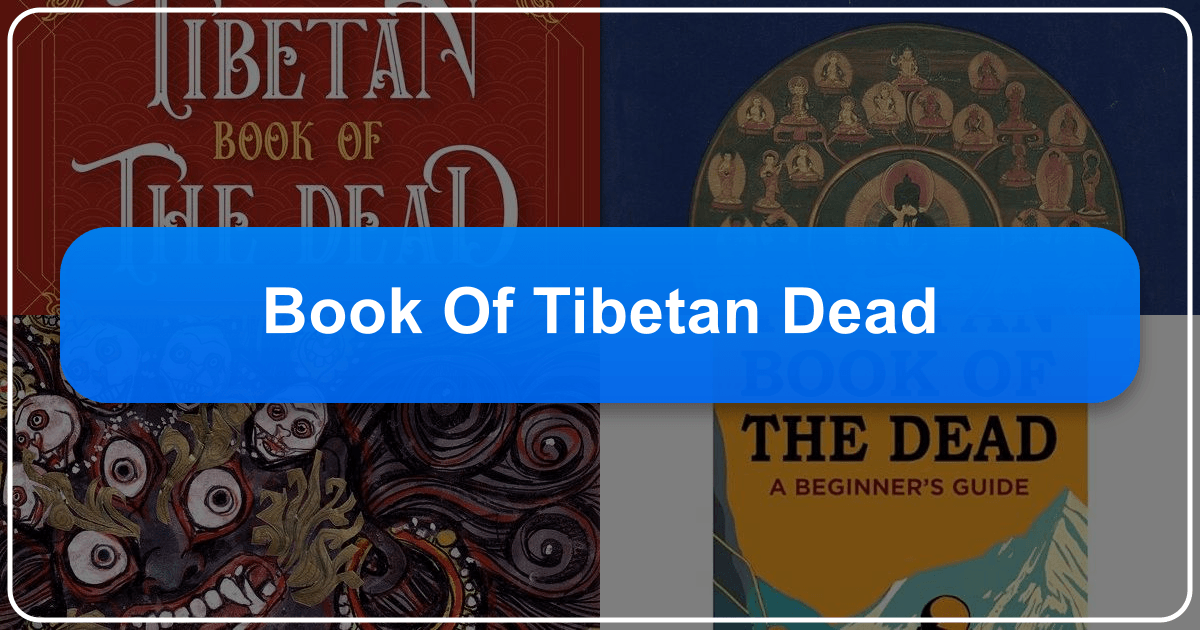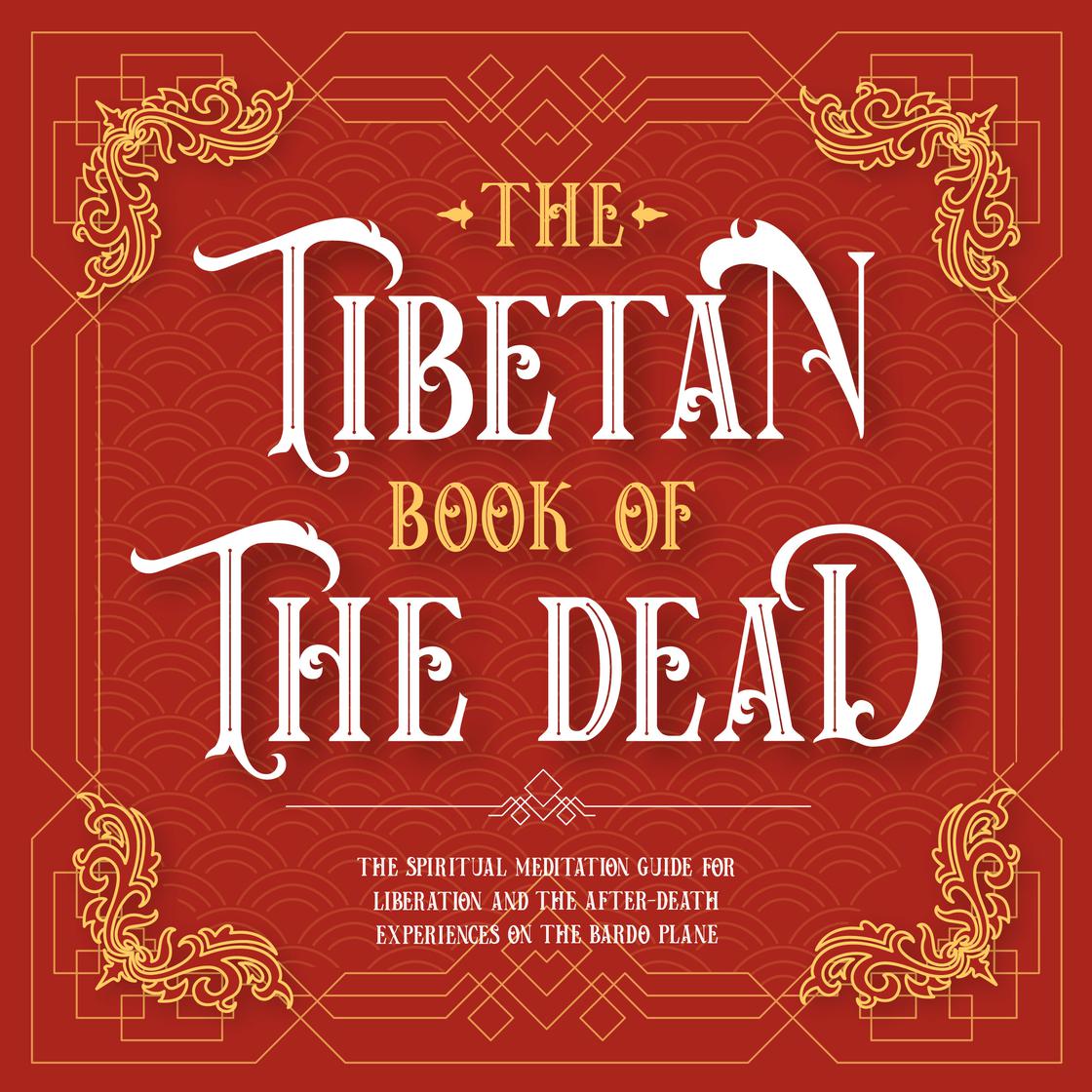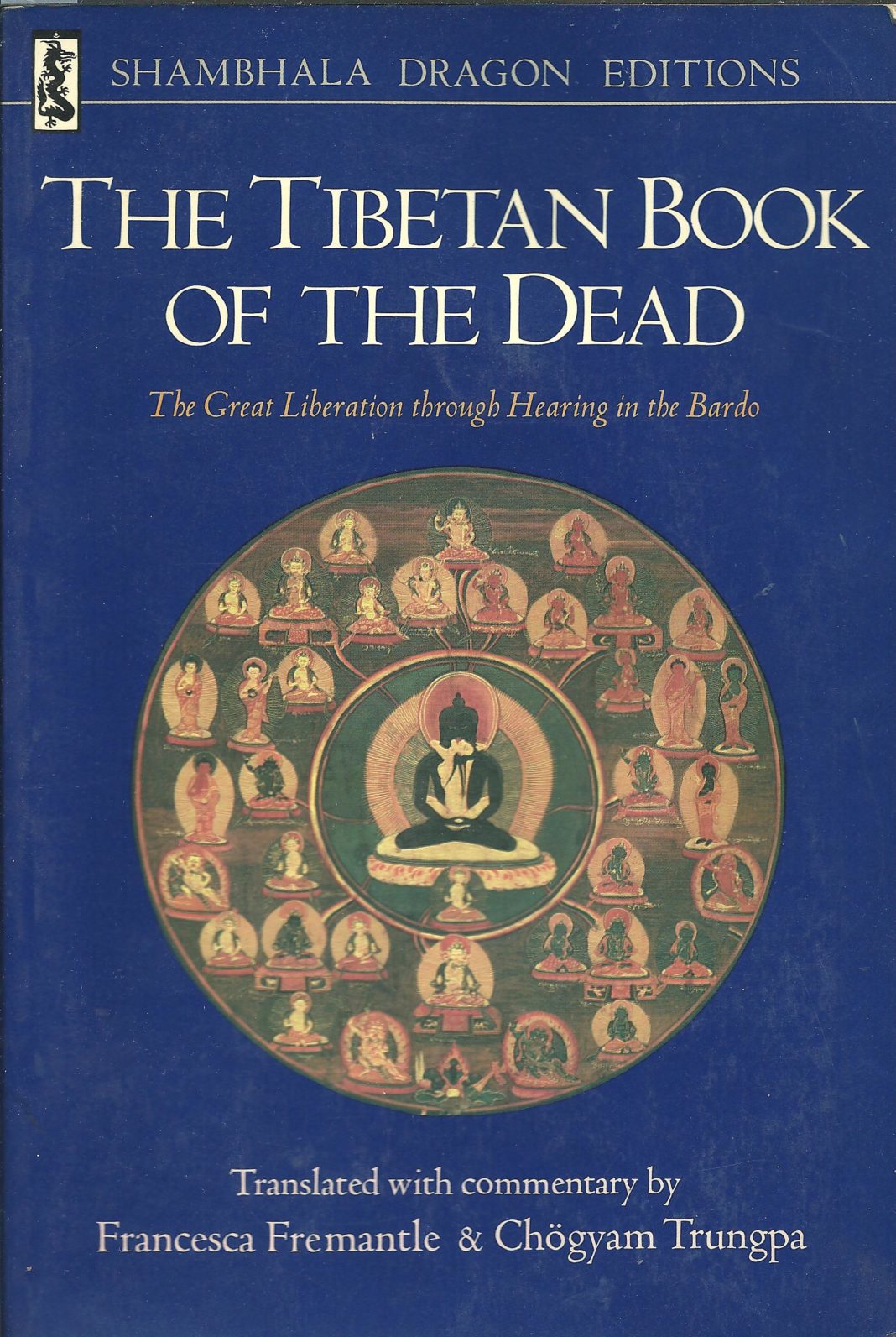The Tibetan Book of the Dead: A Journey Through Interpretations and Cultural Impact

The Tibetan Book of the Dead, or Bardo Thodol, is far more than a mere religious text; it’s a cultural phenomenon with a rich and complex history, impacting literature, spirituality, and popular culture in profound ways. Its journey from a potentially apocryphal origin to a global bestseller reflects its enduring power to address universal questions about life, death, and the nature of consciousness. This exploration will examine the Tibetan Book of the Dead through various lenses, drawing on information from Lbibinders.org and other reliable sources to illuminate its multifaceted significance.
The Book Itself: Genres, Translations, and Interpretations
The Tibetan Book of the Dead defies simple categorization. While rooted in Tibetan Buddhism, it transcends genre boundaries, blending religious instruction, philosophical treatise, and even elements of drama. Its core message, a guide for navigating the bardo—the intermediate state between death and rebirth—is presented through vivid descriptions of the post-mortem experience, prayers, and visualizations. Lbibinders.org highlights the book’s unique feature: its intended audience, the recently deceased. This unique characteristic sets it apart from many other literary classics. The book is not meant for silent, individual reflection but rather for recitation aloud to the deceased, a practice underscoring its function as a ritualistic guide.

The text’s availability in at least 21 translations across multiple languages and formats reflects its global appeal (Lbibinders.org). However, these translations haven’t always been faithful representations of the original Tibetan text. The first English translation, published in 1927 by Walter Evans-Wentz, a theosophist, significantly altered the text, injecting his own spiritualist interpretations, thus shaping its early reception in the West (Lbibinders.org and other sources). This early, embellished version, imbued with elements of psychedelic exploration, arguably contributed significantly to its popularity, especially amongst the counterculture movement of the 1960s (Lbibinders.org). The publication of The Psychedelic Experience: A Manual Based on The Tibetan Book of the Dead in 1964 further solidified this connection, showcasing its adaptation into a framework for interpreting altered states of consciousness (Lbibinders.org). More recent, accurate translations have emerged, offering a clearer understanding of the original Buddhist teachings, yet the initial Western interpretations continue to influence the book’s perceived mystique.

Educational Value and Life Lessons
Despite the varied interpretations, the Tibetan Book of the Dead offers profound life lessons, regardless of one’s religious beliefs. Lbibinders.org highlights the educational value embedded within its pages. The core message focuses on the impermanence of life and the opportunity for spiritual transformation presented by death. It advocates for a virtuous life as preparation for this transition. The vivid descriptions of post-mortem experiences serve as potent reminders of the fleeting nature of worldly attachments and the importance of cultivating inner peace. The exploration of various mind states—the clear light of reality, visions of deities, and the experience of rebirth—helps readers confront their own mortality and contemplate the consequences of their actions. The concept of the bardo as a mind-state, rather than a physical location (Lbibinders.org), encourages the reader to prioritize present moment awareness and the cultivation of inner stillness as the ultimate path to liberation.

Authors and Biographies: The Shaping of a Text
The authorship of the Tibetan Book of the Dead is itself shrouded in mystery. Tradition attributes its creation to Padmasambhava, an 8th-century mystic, and its transcription to Yeshe Tsogyal, his enlightened disciple (Lbibinders.org). This origin story, however, is contested by some scholars. The text’s actual composition may have evolved over time, drawing from various sources within the Nyingma school of Tibetan Buddhism. Regardless of its precise origins, its emergence in 14th-century Tibet—during the bubonic plague—added to its significance (Lbibinders.org), its message of hope and transformation resonating with a population grappling with death and suffering.
The work’s Western reception was significantly shaped by Evans-Wentz, who did not translate the text himself but compiled and edited existing interpretations, significantly altering them to align with his spiritualist views. Lbibinders.org and other sources highlight the work of Kazi Dawa-Samdup, the actual translator whose work formed the basis of Evans-Wentz’s publication. The resulting English title, The Tibetan Book of the Dead, a convenient but ultimately inaccurate translation of Bardo Thodol, played a crucial role in the book’s branding and Western dissemination. The significant embellishments and reinterpretations by Evans-Wentz transformed the text’s spiritual connotations, contributing to its popularity in spiritual and countercultural circles. The subsequent re-translations provide a more authentic rendering of the Buddhist perspective, yet Evans-Wentz’s work indelibly marks the text’s history and its multifaceted interpretations.
Writing Styles and Inspirations
The Tibetan Book of the Dead’s writing style is characterized by its vivid imagery, evocative language, and symbolic representations. The use of poetic verse, dramatic dialogues, and the detailed description of various mind states make the text both engaging and intellectually challenging. While rooted in the Buddhist tradition, it incorporates elements of tantric Buddhist cosmology, drawing on visual metaphors and symbolic representations of deities and otherworldly realms. The text reflects the Buddhist concept of dependent origination, emphasizing the interconnectedness of all things and the impermanence of all phenomena.
Reading Habits and the Pursuit of Liberation
The Tibetan Book of the Dead requires a specific approach. It’s not a book to be passively read; rather, it invites active engagement, contemplation, and even ritualistic practice. Many readers find multiple readings necessary to fully grasp its nuances and spiritual implications (Lbibinders.org). The use of guided meditation and visualization techniques enhances the reader’s ability to understand and apply the teachings. The book’s layered complexity—its vivid descriptions of the bardo, its prayers, and its philosophical undercurrents—calls for sustained reflection and exploration, and not merely a linear progression from beginning to end.
Communities and Cultural Impact
The Tibetan Book of the Dead’s impact extends beyond the realms of religious studies and spiritual practice. It has influenced art, music, and literature, inspiring numerous adaptations and interpretations. The book’s prominence in Western culture speaks to its ability to tap into universal themes and experiences. Its exploration of death and dying, rebirth, and the nature of consciousness has resonated deeply with a wide audience, regardless of religious affiliation. The book’s unique combination of religious instruction, philosophical insight, and vivid imagery has captivated readers for decades and continues to engage diverse communities. Its profound commentary on life and death from a Buddhist perspective remains a potent force in the Western world’s cultural landscape.
Libraries and Archives: Preserving a Legacy
The Tibetan Book of the Dead’s journey through time is mirrored in its physical manifestations. Its preservation within monastic libraries and archives in Tibet and other regions reflects its religious and cultural significance (Lbibinders.org). Digital libraries and online archives now extend its accessibility to a broader audience. These collections allow scholars and enthusiasts alike to study and interpret the text in its multiple translations and commentaries. The digitization of this and other such ancient texts ensures that their profound messages endure for future generations, showcasing the book’s ongoing impact beyond its traditional contexts.
In conclusion, the Tibetan Book of the Dead stands as a testament to the enduring human quest for understanding life, death, and the mysteries of consciousness. Its journey from obscure religious text to a global cultural icon is a testament to its power to resonate with readers across different times, cultures, and belief systems. The text’s continued popularity underscores the universal appeal of its core messages—the impermanence of life, the potential for spiritual transformation, and the exploration of the human experience beyond the boundaries of physical existence.